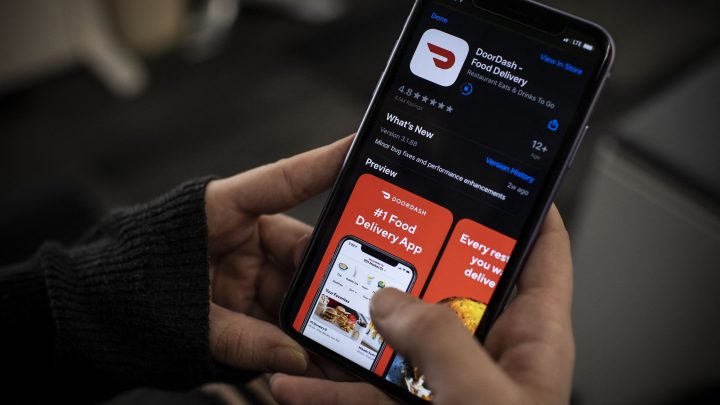
Food delivery apps supersized in recent years, but profits didn’t
Food delivery apps supersized in recent years, but profits didn’t

Among a wave of layoffs announced recently, including by CNN and AMC Networks, DoorDash said it’s cutting about 1,200 corporate jobs.
The food delivery service is the latest tech company to rein in costs as markets look for actual profits from companies instead of just growth. DoorDash and other delivery apps saw plenty of growth during the pandemic. But profits? Those have been more elusive.
Alex Susskind is a restaurant guy — personally and professionally. He teaches food and beverage management at Cornell.
“I was a complete nondelivery, non-third party delivery person under any circumstances.” Until 2020. “And now we’re using those services more than I would have imagined,” he said.
The pandemic exploded the market for these apps almost overnight. But as purveyors of workout apps, streaming services and videoconferencing technology found out, that kind of momentum is hard to sustain.
“That trend of eating at home or off-premise somewhere, I don’t believe that market share from the consumer standpoint is going to go away. It’s how do they get that food?” said Molly Harnischfeger, a food industry consultant with AlixPartners.
Consumers have made a permanent shift to eating at home more often, she said. But — especially as inflation has worsened — the high fees delivery apps charge have become a bigger barrier. That’s true for consumers and for restaurants.
“It was a lifeline during the pandemic, but going forward, you know, it’s not necessarily sustainable to give a cut of the profit to these companies to that degree,” Harnischfeger said.
Restaurants are increasingly building their own online ordering systems or using lower-cost plug-ins from third parties geared more toward takeout, she added.
But even if third-party delivery apps have seen the appetite for the service level off, they’ve still got a smorgasbord of user data, said Vijay Gurbaxani, the Taco Bell endowed professor of information systems and computer science and director of the Center for Digital Transformation at the University of California, Irvine. “So there’s a lot of insights, and this data is ripe for exploitation.”
For instance, the apps might know that Gurbaxani is more likely to order Mexican delivery when he gets back from an exhausting Thanksgiving week vacation.
“Cactus tacos, I’ll have you know.” Even if it does cost almost twice the price of regular takeout.
There’s a lot happening in the world. Through it all, Marketplace is here for you.
You rely on Marketplace to break down the world’s events and tell you how it affects you in a fact-based, approachable way. We rely on your financial support to keep making that possible.
Your donation today powers the independent journalism that you rely on. For just $5/month, you can help sustain Marketplace so we can keep reporting on the things that matter to you.

















